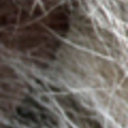Ailanthus altissima swingle has anti-anaphylactic effect and inhibits inflammatory cytokine expression via suppression of nuclear factor-kappaB activation.
Słowa kluczowe
Abstrakcyjny
Ailanthus altissima swingle (ailanthic cortex, AAS) has been used as a traditional medicine for fever, bleeding, infection, and inflammation for many years in Korea. However, its mechanisms have not been examined. In the present study, we investigate the effect of AAS on the mast-cell-mediated allergic and inflammatory reaction using in vivo and in vitro models and elucidate its molecular mechanisms. AAS significantly inhibited compound 48/48-induced edema and systemic anaphylaxis. AAS significantly inhibited passive cutaneous anaphylaxis. AAS inhibited histamine release from rat peritoneal mast cells (RPMCs) in a dose-dependent manner. Moreover, AAS significantly inhibited production of inflammatory cytokines, tumor necrosis factor (TNF), interleukin (IL)-6, and IL-8 on the phorbol 12-myristate 13-acetate and calcium ionophore A23187 (PMACI)-stimulated human mast cell line, HMC-1 cells. AAS inhibits the IgE or stem cell factor-induced TNF production on RPMCs. In activated HMC-1 cells, the expression level of NF-kappaB/Rel A protein increased in the nucleus, whereas the level of NF-kappaB/Rel A in the nucleus was decreased by AAS treatment. In addition, AAS inhibited the PMACI-induced IkappaBalpha degradation. In conclusion, the present results indicate that AAS has potent anti-anaphylactic and anti-inflammatory properties.


